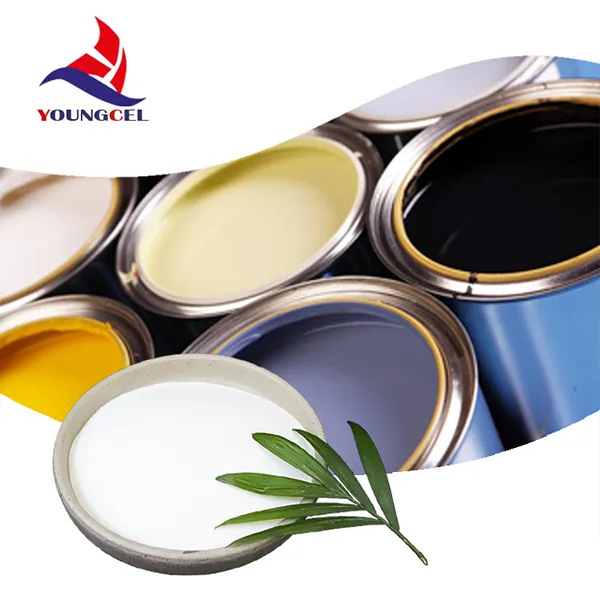Understanding Chemicals Used in Paints
Paints are ubiquitous in our daily lives, used to beautify, protect, and preserve a variety of surfaces. Whether it’s the vibrant colors on your walls, the glossy finisher on a car, or the protective coatings on industrial machinery, paints play an essential role in our environment. However, the chemical composition of these paints reveals a fascinating and complex world that is often overlooked.
The Primary Components of Paint
At its core, paint is composed of three main components pigments, binders, and solvents. Each of these elements serves a specific purpose in the formulation of paint.
1. Pigments These are finely ground solid particles that provide color and opacity to the paint. Pigments can be synthetic or natural and are typically divided into two categories organic and inorganic. Organic pigments tend to produce more vivid colors but may have lower lightfastness compared to inorganic pigments. Common inorganic pigments, such as titanium dioxide, are known for their excellent coverage and durability.
2. Binders Binders act as the glue that holds the pigment particles together and helps the paint adhere to surfaces. They create a film that provides durability and flexibility. Common types of binders include acrylics, alkyds, and epoxy. Each binder type has unique properties; for instance, acrylics offer excellent UV resistance, making them ideal for outdoor applications, while epoxy resins provide superior adhesion and chemical resistance.
3. Solvents Solvents are used to dissolve or disperse the other components and adjust the paint's viscosity, allowing for easy application. Traditionally, many paints relied on volatile organic compounds (VOCs) as solvents. However, due to environmental concerns, there has been a significant shift towards water-based paints and low-VOC alternatives. Solvent choice is crucial as it impacts both the paint's application and drying time.
Additives Enhancing Paint Performance
chemicals used in paints

In addition to the primary components, various additives are included to enhance the performance of paints
. These additives serve numerous functions, including- Stabilizers Help maintain the dispersion of pigments and prevent settling. - Thickeners Adjust the viscosity for improved application and control. - Anti-foaming agents Minimize bubble formation during mixing and application. - Biocides Prevent the growth of mold and bacteria in the paint film.
Each of these additives is carefully selected to improve the paint's performance, longevity, and appearance.
The Environmental Impact of Paint Chemicals
While paints provide aesthetic and protective benefits, the chemicals involved can have significant environmental implications. The use of VOCs contributes to air pollution and can cause adverse health effects for both the users and the environment. Consequently, regulatory agencies have implemented strict guidelines to limit VOC emissions, leading to the development of greener paint formulations.
Water-based paints, which use water as a primary solvent, have gained popularity due to their lower environmental impact. They not only emit fewer harmful chemicals but also clean up easily with soap and water. Furthermore, advancements in paint technology have led to the formulation of zero-VOC and low-VOC paints, which are safer alternatives for consumers and professional painters alike.
Conclusion
The chemistry behind paints is a testament to the interplay between art and science. The careful selection of pigments, binders, solvents, and additives determines not only the aesthetic appeal of a paint but also its durability, safety, and environmental impact. As the industry continues to evolve with a focus on sustainability, the development of eco-friendly paint solutions is more important than ever. Understanding the chemicals used in paints not only equips consumers with the knowledge to make informed decisions but also reinforces the significance of responsible manufacturing practices in preserving our planet for future generations.
-
Rdp Powder: Key Considerations for Wholesalers in the Building Materials IndustryNewsJul.08,2025
-
Key Considerations for Wholesalers: Navigating the World of Hpmc - Based ProductsNewsJul.08,2025
-
Hpmc Detergent: Key Considerations for WholesalersNewsJul.08,2025
-
Key Considerations for Wholesalers: China Hpmc For Tile Adhesive, Coating Additives, Concrete Additives, and MoreNewsJul.08,2025
-
Crucial Considerations for Wholesalers: Navigating the World of Construction MaterialsNewsJul.08,2025
-
Key Considerations for Wholesalers Sourcing Additive For Cement, Additive For Concrete, Additive For Putty from Additive Manufacturer Shijiazhuang Gaocheng District Yongfeng Cellulose Co., Ltd.NewsJul.08,2025




